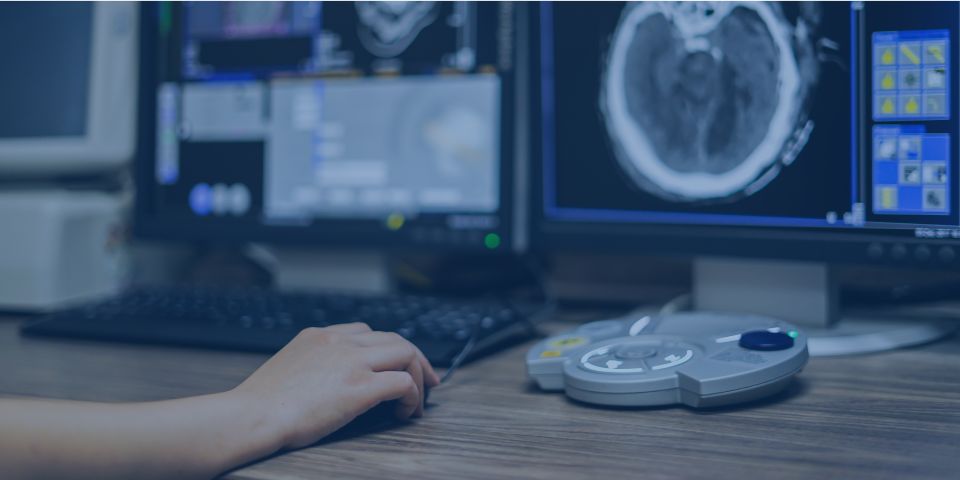

Teleradiology
Radiology Online Reporting: Transforming Diagnosis with Speed and Accuracy
In today’s fast-paced world, healthcare providers are under pressure to deliver timely and accurate diagnoses. One of the most significant advancements in this space is radiology online reporting. By integrating digital platforms, teleradiology, and AI-powered tools, radiologists can now generate and share diagnostic imaging reports more efficiently than ever. This shift not only improves patient outcomes but also boosts hospital productivity.
What is Radiology Online Reporting?
Radiology online reporting refers to the digital delivery of radiological interpretations using secure platforms. It enables radiologists to read, analyze, and report diagnostic images remotely, eliminating the need for physical presence or paper-based reports.
This system supports:
- Teleradiology reporting services
- Remote radiology reporting for rural or under-resourced hospitals
- Integration with AI radiology reporting tools for faster triaging
How Does It Work?
Online reporting systems connect radiologists, technicians, and referring doctors via cloud-based networks. Here’s a simplified flow:
1. Image Acquisition
Hospitals and diagnostic centers capture medical images (X-rays, CTs, MRIs).
2. Cloud Upload
Images are securely uploaded to a platform accessible by a radiologist.
3. Interpretation
The radiologist accesses the images remotely and uses digital tools (including AI suggestions) to interpret them.
4. Digital Radiology Reporting
Findings are documented, reviewed, and electronically shared with the referring physician.
Benefits of Radiology Online Reporting
1. Faster Turnaround Time
The scans are sent to the radiologist and the reports are shared with the physicians in real-time. This helps in faster diagnosis and treatment.
2. Access to Expert Opinion
Remote or small healthcare centers can access specialists via virtual radiology reporting services. The reports can be shared with specialists across the globe who can provide their medical opinion without any barrier in diagnosis.
3. Scalability for Healthcare Systems
Hospitals can manage high imaging volumes without geographical limitations of reaching patients in different locations.
4.Cost Efficiency
This reduces the need for on-site specialists, travel time, and administrative overhead.
AI in Online Radiology Reporting
The integration of AI radiology reporting tools has transformed diagnostic efficiency.
AI can:
- Pre-read and flag critical findings
- Highlight suspicious areas
- Speed up workflow for radiologists
While AI enhances productivity, final interpretation still lies with human experts, ensuring safety and accountability.
Use Cases: Where Radiology Online Reporting is a Game Changer
- Emergency settings where time is crucial
- Night-time reporting via outsourced teleradiology
- Second opinions across borders
- Pandemic response, reducing in-person consultations
AMI’s Role in Safe Tele-Radiology Services
At Aster Medical Imaging (AMI), we pride ourselves on offering safe radiology solutions that prioritize patient data security, accuracy, and clinician collaboration. Whether through teleradiology, remote consultations, or AI-integrated tools, AMI ensures diagnostic precision at scale.
Looking for more insights into our team? Discover the human side of radiology with Life at AMI.
Challenges and Solutions
| Challenges | Solutions |
| Data security concerns | Encrypted platforms, HIPAA & GDPR compliance |
| There’s a shortage of radiologists across many centers | We provide teleradiology services to bridge the radiologist gap |
| The radiology process often takes more time than expected | Our teleradiology process ensures faster, more efficient reporting |
| Radiologists are usually unavailable during night hours | With our Night Hawk service, we offer 24/7 radiology support—even at night |
| Most diagnostic centers focus mainly on ultrasound; MRI and CT are often treated as backup options | We assist when your doctors are occupied with ultrasound or other procedures |
Future Trends in Online Radiology Reporting
- Greater reliance on AI to handle screening-level cases
- Voice-to-text reporting for seamless dictation
- Integration with Electronic Health Records (EHR)
- Advanced image sharing among multispecialty teams
Conclusion: The Future is Digital
Radiology online reporting is more than a technological upgrade — it’s a diagnostic revolution. By combining digital speed with medical accuracy, it helps radiologists deliver actionable insights wherever and whenever needed. From diagnostic imaging online reports to virtual radiology reporting services, the future of radiology is secure, scalable, and safe — exactly what patients and healthcare professionals deserve.
Expanding access to expert radiology services is a global healthcare priority. In regions with limited radiologists, online reporting ensures that no patient is left behind. From government hospitals to private diagnostic centers, the shift toward digital platforms democratizes access to top-tier imaging analysis.
Artificial intelligence doesn’t replace the human radiologist but acts as a co-pilot, enhancing the detection of abnormalities such as fractures, nodules, and hemorrhages. This symbiotic relationship between machine learning and human judgment results in more confident, faster diagnoses, particularly in time-sensitive settings.
AMI's commitment to innovation doesn’t end with technology. We invest in continuous training for our radiology teams, promote work-life balance, and foster a culture of excellence. From onboarding new tools to encouraging collaboration across departments, our mission is to offer safe radiology that patients and doctors trust. As more hospitals adopt online reporting models, patient expectations are evolving. Transparency, quick turnaround times, and access to report archives are becoming the norm. Patients today want more control and clarity, and online radiology platforms are rising to meet that demand.
Another emerging trend is personalized radiology reporting. Using patient history, clinical notes, and prior scans, radiologists are moving toward customized insights instead of generic reports. Personalized narratives not only help clinicians make better decisions but also improve patient understanding and compliance. This holistic approach ensures that diagnostic reporting is not just about identifying disease—it’s about communicating clearly, contextually, and compassionately.
In summary, radiology online reporting is no longer a futuristic concept—it’s the present standard for quality care. With advancements in technology, improved workflows, and greater interconnectivity, healthcare providers are empowered to make faster, smarter decisions. As this field evolves, so does our ability to serve patients with the accuracy, safety, and speed they deserve.
Digital healthcare is transforming lives every day.
Key Takeaways
- Radiology online reporting enhances speed, accuracy, and accessibility.
- Teleradiology bridges the gap for remote and emergency healthcare.
- AI tools support radiologists, not replace them.
- AMI ensures safe radiology through cutting-edge digital infrastructure.
FAQs
Radiology reporting is the process of interpreting medical images and delivering a written report with findings, impressions, and possible recommendations. With digital radiology reporting, this process is now faster and more accessible.Radiology reporting is the process of interpreting medical images and delivering a written report with findings, impressions, and possible recommendations. With digital radiology reporting, this process is now faster and more accessible.
Only licensed radiologists or specialists trained in diagnostic imaging are qualified to interpret scans and issue formal reports.
"Findings" refer to what the radiologist observes in the scan — normal structures, anomalies, or signs of disease. These observations help your doctor understand what’s happening in your body and decide the next steps."Findings" refer to what the radiologist observes in the scan — normal structures, anomalies, or signs of disease. These observations help your doctor understand what’s happening in your body and decide the next steps.
More from AMI
Unlocking the Knee: How Tele-Reporting Service Empowers Clinicians
25/11/2025
How Teleradiology Reporting Services Are Revolutionizing Frozen Shoulder Diagnosis and Reporting
17/11/2025
Revolutionizing Indian Healthcare: Unlocking the Potential of Teleradiology in Remote Areas
27/09/2023
Behind The Scenes of Teleradiology: How Digital Imaging Is Changing Diagnostic Medicine
16/10/2023
How Teleradiology Solutions Help Hospitals Cut Turnaround Time
20/08/2025
Scope of Radiologist in India
29/08/2023
MRI Spine Thoracic: How Teleradiology Enhances Faster, Accurate Diagnosis
29/09/2025
Emerging Trends and Technologies in Medical Imaging
19/06/2023
Teleradiology's Contribution to Timely Emergency Diagnoses
04/10/2023
Imaging In Pregnancy
18/01/2023
How Aster Medical Imaging’s Nighthawk Service Enhances Brain Neuroimaging
29/09/2025
Cardiovascular Imaging: Expanding Access to Advanced Heart Care with Teleradiology
29/09/2025
Sports-Related Injuries and the Importance of Radiology
30/01/2023
The Future of MRI: Advancements and AI Integration in Online MRI Reporting
19/05/2025
What is Diagnostic Radiology? Understanding its Tests and Procedures
14/08/2023
Intra- Operative 3D Imaging With O- Arm Making Complex Spine Surgeries Safe and Accurate
30/11/2022
Emerging Techniques in Radiology By Dr. Namita
10/11/2022
10 Strategies To Prevent Burnout In Radiology
09/01/2023
Advances In Neuroradiology
06/01/2023
Empowering Radiologists-Teleradiology Redefines the Role of Imaging Specialist
09/10/2023
How to Choose a Prospective Teleradiology Service Provider
07/08/2023
Why Hospitals Prefer Teleradiology Outsourcing for Accurate and Timely MSK Injury Reports
14/11/2025
How Teleradiology Supports Musculoskeletal Pain Specialists in Diagnosis
20/08/2025
Radiology Practices
30/11/2022
Improvement of Patient Care Through Teleradiology
03/07/2023
Imaging Instrumentation Trends In Clinical Oncology
26/06/2023
How to Increase the Efficiency of the Radiology Equipment
21/08/2023

AMI Expertise - When You Need It, Where You Need It.
Partner With Us
